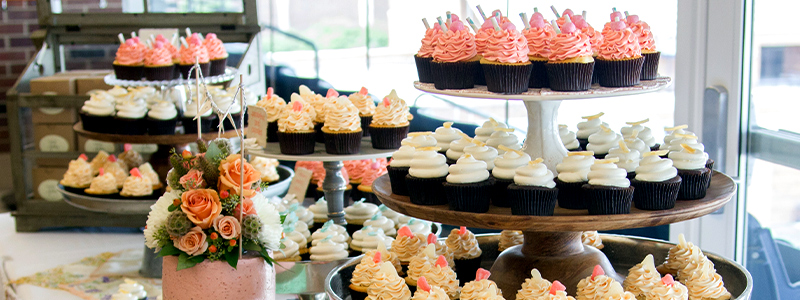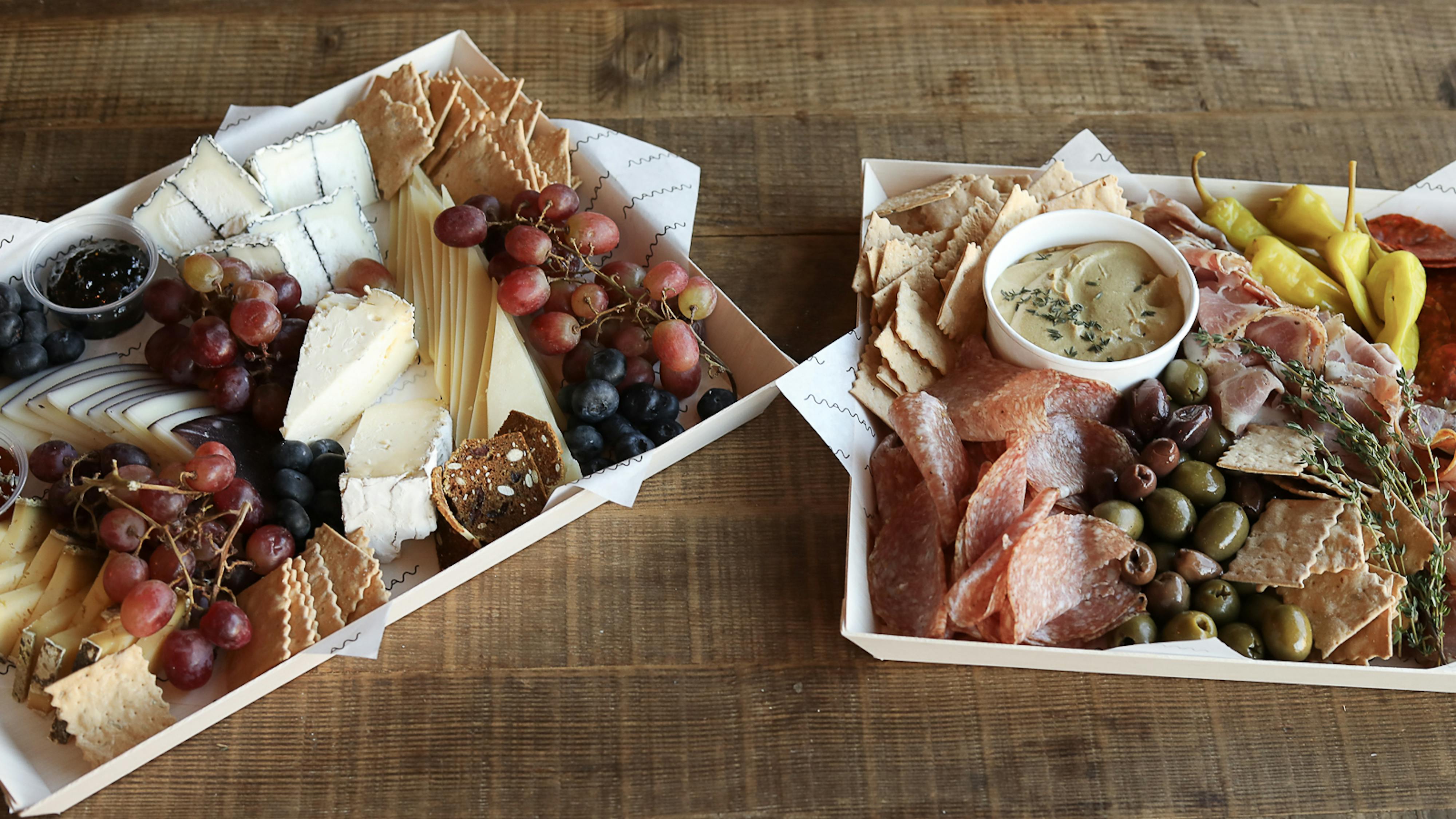Bakery Catering Maddington: Perfect for Weddings and Occasions
Bakery Catering Maddington: Perfect for Weddings and Occasions
Blog Article
Understanding the Art of Pastry Shop Products: From Newly Baked Breads to Irresistible Pastries and Finger Foods
The detailed art of bakeshop products incorporates a spectrum of techniques and ingredients that change standard elements into culinary thrills. From the scientific research behind the best loaf of bread, where fermentation and gluten development play pivotal duties, to the skill needed for developing layered breads, each aspect discloses a compelling narrative of craftsmanship. The versatility of finger foods highlights exactly how flavor and structure can be skillfully integrated to engage varied taste choices. As we explore these aspects, one might wonder: what underlying concepts govern the success of these beloved productions?
The Scientific Research of Bread Making
At the heart of every loaf of bread lies an interesting interaction of chemistry and biology. The process of bread making starts with the mix of flour, salt, water, and yeast-- each component playing a crucial duty in the last product.
Yeast, a living organism, ferments the sugars existing in the flour, generating co2 and alcohol while doing so. The co2 gas develops bubbles in the dough, causing it to climb and develop a light structure. The temperature level and humidity throughout fermentation considerably influence yeast activity and, consequently, the bread's taste and appearance.

Mastering Pastry Strategies
How can one achieve the fragile equilibrium of appearance and taste that defines phenomenal pastry? Mastering bread strategies needs a deep understanding of ingredients, techniques, and the scientific research behind them. Fundamental to this craft is the option of top quality active ingredients-- flour, butter, sugar, and eggs-- each playing a critical function in the end product's taste and appearance.
The technique of lamination, which includes folding layers of dough and butter, creates the wanted flakiness in pastries like croissants and smoke pastry. Accuracy in temperature level is essential, as butter should continue to be cold to ensure ideal layers. Correct mixing approaches, such as the creaming method for cakes, make certain also consolidation of air and fat, resulting in a light and ventilated crumb.
Additionally, keeping the appropriate humidity levels throughout baking can significantly impact the outcome, making sure that breads climb correctly and attain that golden-brown coating. The art of pastry additionally demands patience and method; each attempt boosts one's ability and understanding of the detailed balance required to develop alluring breads that thrill the senses. Mastery in these techniques inevitably identifies a competent bread cook from an amateur.
Kinds of Finger Foods
The world of culinary delights expands beyond pastries to include a vast variety of finger foods, which are commemorated for their comfort and adaptability. These bite-sized treats are perfect for social celebrations, offering a variety of tastes and structures that accommodate diverse tastes buds.

On the sweeter side, miniature tarts and bite-sized cupcakes supply a fascinating coating to any dish, attracting those with a wonderful tooth. Furthermore, cheese and charcuterie boards offer as a sophisticated choice, enabling guests to customize their bites with an assortment site of meats, cheeses, nuts, and fruits.
Flavor Profiles in Cooking
Baking is an intricate dancing of flavor profiles that integrates wonderful, tasty, and umami notes to develop a harmonious experience for the palate. Comprehending these accounts is necessary for bakers seeking to boost their developments.
Sweetness typically acts as the structure in baked products, with sugars, fruits, and natural sweeteners improving taste depth. Components such as chocolate and sugar present complicated sweet notes that can either control or match other tastes. Conversely, tasty aspects, typically discovered in breads and pastries, provide balance and comparison. Ingredients like spices, natural herbs, and cheeses can transform a simple dough right into a multifaceted flavor experience.
Umami, regularly overlooked in baking, plays a significant role in improving flavors. Ingredients such as aged cheeses, fermented products, or perhaps specific nuts add to a mouthwatering depth that boosts overall taste.
Additionally, the interplay of level of acidity from ingredients like buttermilk or citrus zest can brighten flavors, offering a refreshing counterpoint to sweet taste. By thoughtfully integrating these taste profiles, bakers can craft products that reverberate with diverse tastes buds, developing an extraordinary cooking experience. Eventually, mastering flavor accounts is key to technology in the world of baking.
Essential Baking Tools and Active Ingredients
Recognizing taste accounts in baking collections the phase for choosing the right devices and components that assist in the production of remarkable baked products. The foundation of effective baking depend on having vital tools available. Trick items include mixing bowls, gauging mugs, and spoons for accuracy, as well as a durable stand mixer or hand mixer for effortless blending. i was reading this A dependable collection of cooking frying pans-- such as sheet pans, loaf pans, and cake frying pans-- is critical for accomplishing wanted textures and forms.
In terms of components, high quality issues considerably. Flour functions as the foundation of most dishes; choosing the best type-- be it all-purpose, bread, or bread flour-- can substantially affect the outcome. Sugar not just sweetens but also adds to appearance, while eggs act as binders and raising agents. Baking powder and baking soda are important for developing lift in pastries and cakes.
Furthermore, including flavor boosters like vanilla essence, flavors, and citrus zest can boost your creations. By making certain accessibility to these basic tools and active ingredients, bakers can confidently start their culinary journey, crafting a varied variety of delightful baked items.
Verdict
To conclude, the art of pastry shop products encompasses an extensive understanding of both creative methods and scientific principles. Proficiency in bread production, pastry prep work, and finger food presentation exposes the detailed partnerships in between ingredients and procedures. Checking out diverse flavor profiles improves the baking experience, while essential devices and ingredients give the structure for success. Inevitably, the captivating world of baking thrives on the harmonious interaction of science and imagination, leading to a myriad of delightful culinary productions.
Just how can one achieve the fragile equilibrium of appearance and flavor that defines extraordinary pastry? Basic to this craft is the selection of high-grade components-- flour, butter, sugar, and eggs-- each playing an important function in additional hints the last product's taste and appearance.

Comprehending taste accounts in baking sets the stage for selecting the right tools and active ingredients that help with the production of phenomenal baked goods. Exploring varied flavor accounts enhances the baking experience, while crucial devices and ingredients offer the foundation for success.
Report this page